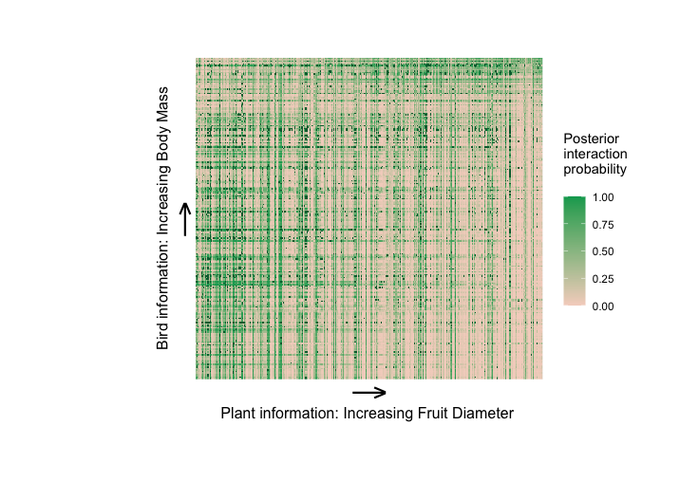Covariate-informed latent interaction models: Addressing geographic & taxonomic bias in predicting bird-plant interactions
Abstract
Climate change and reductions in natural habitats necessitate that we better understand species’ interactivity and how biological communities respond to environmental changes. How- ever, ecological studies of species’ interactions are limited by geographic and taxonomic bias which can lead to severe under-representation of certain species and distort our understanding of inter-species interactions. We illustrate that ignoring these biases can result in poor perfor- mance. We develop a model for predicting species’ interactions that a) accounts for errors in the recorded interaction networks, b) addresses the geographic and taxonomic bias of exist- ing studies, c) is based on latent factors to increase flexibility and borrow information across species, d) incorporates covariates in a flexible manner to inform the latent factors, and e) uses a meta-analysis data set from 166 individual studies. We focus on interactions among 242 birds and 511 plants in the Brazilian Atlantic Forest, and identify 5% of pairs of species with an un- recorded interaction, but posterior probability of existing that is over 80%. Finally, we develop a permutation-based variable importance procedure and identify that a bird’s body mass and a plant’s fruit diameter are most important in driving the presence and detection of species interactions, with a multiplicative relationship.
